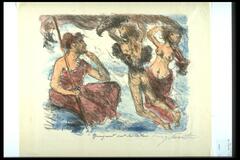168 UMMA Objects
168 UMMA Objects

Ren Yu (Jen Yü)
God of Happiness and Attendant in the Clouds, in the style of Luo Ping
1886
Gift of Jung Ying Ts'ao, in honor of Senator Carl Levin
1987/1.276
![Shiva sits with his consort on a double lotus pedestal. He has six arms, his right three are in varada mudra [a giving gesture], holds a rosary and an arrow. His left arms cup his consorts left breast and hold a lotus flower and a bow. He sits in royal ease, with one leg pendant. He wears bracelets, armlets, necklaces, earrings, and a sacred thread that stretches form his left shoulder down past his waist. On his head he wears an elaborate jatamukuta, a crown interlaced with his matted locks. Parvati sits upon his knee with one leg tucked under her and the other pendant. She is also adorned with jewelry, but wears a more modest diadem at the front of her head.<br /> Shiva sits with his consort on a double lotus pedestal. He has six arms, his right three are in varada mudra [a giving gesture], holds a rosary and an arrow. His left arms cup his consorts left breast and hold a lotus flower and a bow. He sits in royal ease, with one leg pendant. He wears bracelets, armlets, necklaces, earrings, and a sacred thread that stretches form his left shoulder down past his waist. On his head he wears an elaborate jatamukuta, a crown interlaced with his matted locks. Parvati sits upon his knee with one leg tucked under her and the other pendant. She is also adorned with jewelry, but wears a more modest diadem at the front of her head.<br />](/media/W1siZiIsIjIwMjIvMDUvMjUvMnF5ZHF1aXpyaV9kZWZhdWx0LmpwZyJdLFsicCIsInRodW1iIiwiMjQweDIwMCJdXQ?sha=5e9565cd110a2b87)
Indian (Indian (South Asian))
Uma-Maheshvara, a seated Shiva and Parvati (Uma)
12th century
Museum purchase for the James Marshall Plumer Memorial Collection
1964/2.85
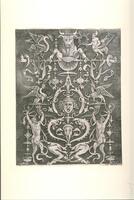
Agostino dei Musi (Italian (culture or style))
Upright Ornament with Bull and Satyrs
1515 – 1525
Museum Purchase
1960/2.133
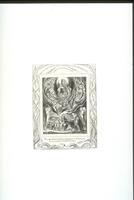
William Blake
Then Satan Went Forth from the Presence of the Lord
03/08/1825
Museum Purchase
1975/2.3
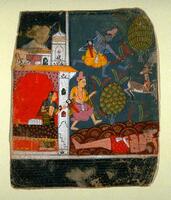
Artist Unknown, India, Central India, Malwa School
Râmâyana manuscript page: Rama kills the deer (folio no. 31)
1635 – 1650
Gift of Mr. George P. Bickford for the James Marshall Plumer Memorial Collection
1964/2.111
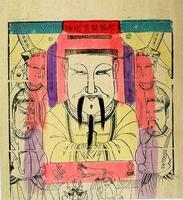
Chinese (Chinese (culture or style))
The God of Wealth Who Adds to Happiness and Multiplies Treasure
20th century
Gift of Willard A. and Marybelle B. Hanna
1989/2.119

Chinese (Chinese (culture or style))
Great King of Water, Grass and Horses
20th century
Gift of Willard A. and Marybelle B. Hanna
1989/2.140

Chinese (Chinese (culture or style))
True God of the Earth
20th century
Gift of Willard A. and Marybelle B. Hanna
1989/2.141
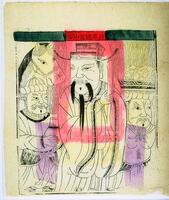
Chinese (Chinese (culture or style))
A God of Wealth: Immortal Official of Recurring Joy and Increasing Trade.
20th century
Gift of Willard A. and Marybelle B. Hanna
1989/2.143
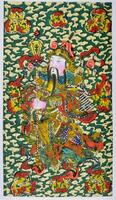
Chinese (Chinese (culture or style))
Military Door God (Pair with 1989/2.150)
20th century
Gift of Willard A. and Marybelle B. Hanna
1989/2.149
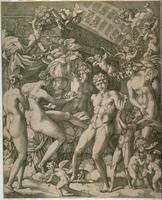
Giovanni Jacopo Caraglio
Mars and Venus Surrounded by Nymphs and Putti
1530 – 1540
Museum Purchase
1985/1.86
Loading…
